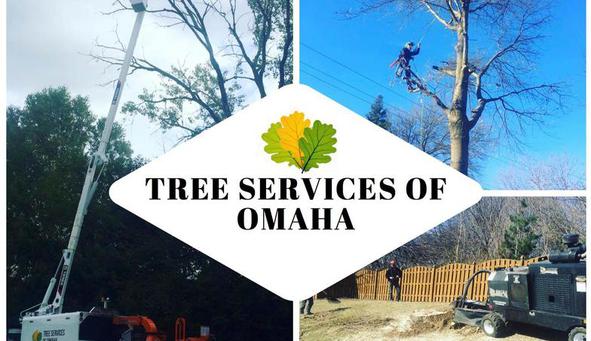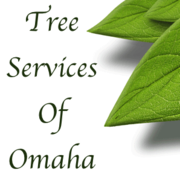Tree Services of Omaha - Omaha, Nebraska
Tree Survival During The Cold Nebraska Winter
by David Steg on 01/05/16
Trees are about 1/2 water, maybe a little less in winter. If the temperature drops cold enough, the water in even the most cold-hardy tree will freeze.
So how do trees survive ice-cold temperatures? They cannot move south or generate heat like a mammal. Sure, the below-ground parts of a tree are kept insulated by a layer of snow, and that is important to winter survival, but the exposed parts of a tree are not so protected.
To survive winter cold, a tree starts its preparations in late summer as day length shortens. Cold acclimation occurs gradually and includes a number of physiological changes in leaves, stems, and roots. And while autumn color seems to get all the attention, it’s what trees do sooner after in autumn that is the most stunning, if harder to see.
Some of these changes seem to border on magic, and while some of the details remain a mystery to science, general mechanisms have been explained. Paul Schaberg, a research plant physiologist with the USDA Forest Service’s Aiken Forestry Sciences Laboratory in Burlington, Vermont, has led many investigations of cold tolerance in trees, particularly in the foliage of montane spruce and fir in New England.
Schaberg’s work suggests three basic ways in which living tree cells prevent freezing. One is to change their membranes during cold acclimation so that the membranes become more pliable; this allows water to migrate out of the cells and into the spaces between the cells. The relocated water exerts pressure against the cell walls, but this pressure is offset as cells shrink and occupy less space.
The second way a tree staves off freezing is to sweeten the fluids within the living cells. Come autumn, a tree converts starch to sugars, which act as something of an antifreeze. The cellular fluid within the living cells becomes concentrated with these natural sugars, which lowers the freezing point inside the cells, while the sugar-free water between the cells is allowed to freeze. Because the cell membranes are more pliable in winter, they’re squeezed but not punctured by the expanding ice crystals.
The third coping mechanism is altogether different. It involves what Schaberg describes as a “glass phase,” where the liquid cell contents become so viscous that they appear to be solid, a kind of “molecular suspended animation” that mimics the way silica remains liquid as it is supercooled into glass. This third mechanism is triggered by the progressive cellular dehydration that results from the first two mechanisms and allows the supercooled contents of the tree’s cells to avoid crystallizing.
All three cellular mechanisms are intended to keep living cells from freezing. That’s the key for the tree; don’t allow living cells to freeze.
A tree doesn’t have to keep all of its cells from freezing, just the living ones. This is significant, since much of a tree’s living trunk is made up of cells that are dead (though it’s strange to think of these cells as dead, because they’re still involved in functions, such as sap flow, that keep the tree alive). Dead cells can and do freeze, but even the lowest temperature can’t kill an already dead cell. And that’s the magic: while the overwhelming majority of a tree’s above-ground cells do indeed freeze regularly when exposed to subfreezing temperatures, the small percentage of living ones don’t. There are living cells in the trunk that remain unfrozen even though they are right next to – and at the same temperature as – dead cells that are frozen solid.
This cellular magic of pliable membranes, sweet antifreeze, and glasslike supercooling, with frost on the outside and viscous dehydration on the inside, helps trees avoid freezing injury to living cells, but it is not without consequence. According to Schaberg, the freezing of those dead cells does have implications for the tree’s health. For example, gas bubbles can form among them upon thawing, and these can prevent sap flow in spring. But Schaberg says that trees have other means to overcome those temporary problems and that it is far better for the tree to deal with these than to allow the water-based contents of nearby living cells to freeze and possibly kill the tree altogether.



